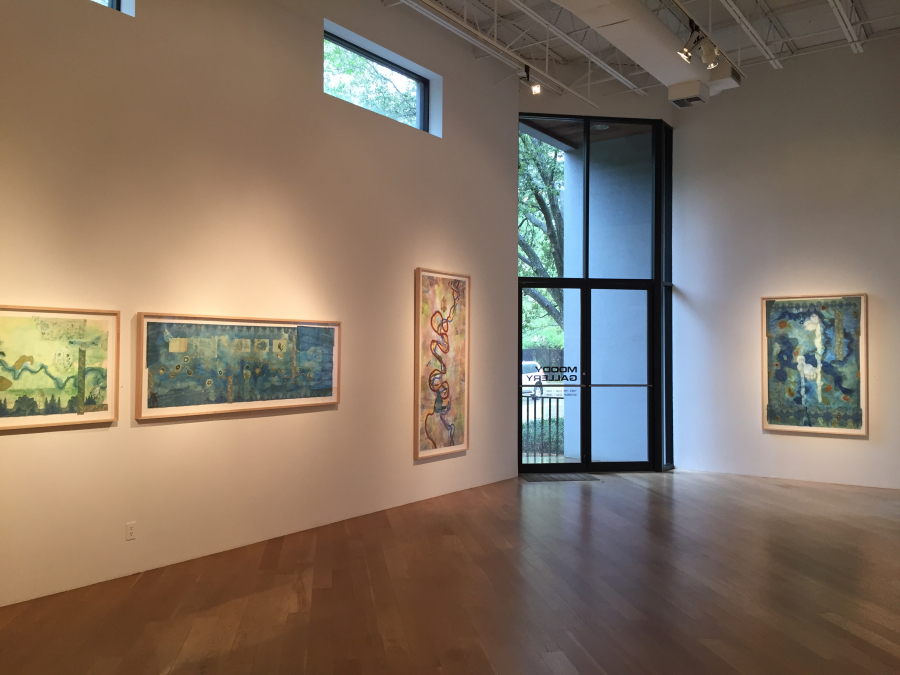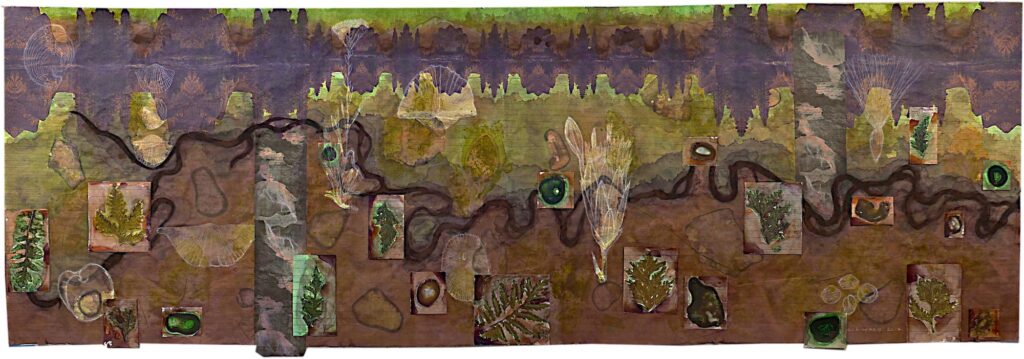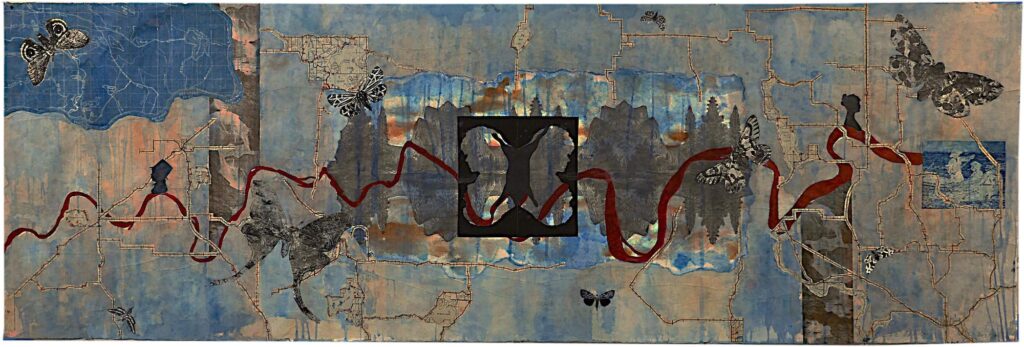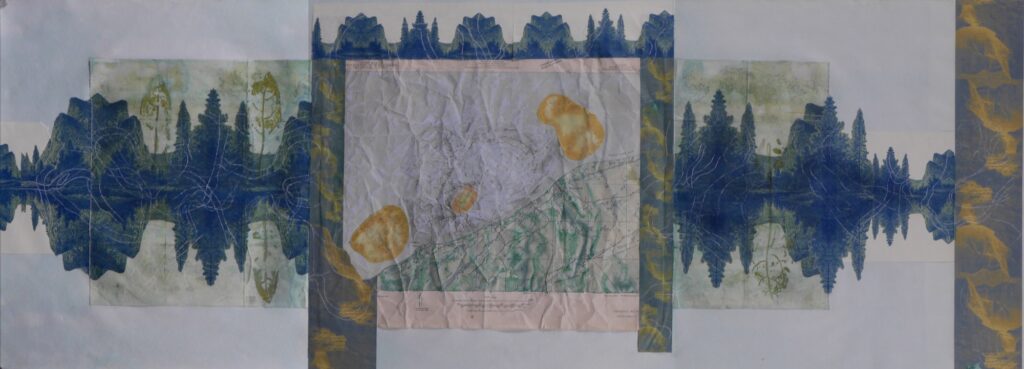WATERSHED
Both the geographical definition of “watershed” (an area of land drained by a body of water) and its alternate meaning (an event that marks a turning point) are in play in this exhibition, which brings together works from two series concerning the Mississippi River. Our present moment in time is certainly a watershed in the affairs of the nation, but my use of the term is also a reflection on the many such “watershed” moments that one encounters in any investigation of the natural and human history of North America.
The first series, Ghosts of the Old Mississippi, is based on geological maps of the ancient courses of the Lower Mississippi River, and was inspired by memories of my childhood in South Louisiana. Rivers are the great metaphors for time, and the maps of the Mississippi’s ancient courses suggested memory to me, both the river’s memory and my own. The project evolved into an exploration of my ancestral roots in New Orleans, where my great-grandfather was a steamboat captain on the Mississippi. I eventually allowed personal memories and artifacts, such as my mother’s recipe cards and the toile patterns of my New Orleans grandmother’s and great aunt’s furnishings, to enter into the work, overlaying the time-frame of human generations onto the vast temporal distances of geology.
As I embarked upon this project, I re-read Mark Twain to begin my research. The wild river described by Twain, with its annual, destructive floods, no longer exists of course, having been tamed by the Army Corps of Engineers’ extensive series of levees, locks, and damns. Further research led me to understand the determinative roll the River has played in the course of human history, pre-history, and natural history on the North American continent, as I learned more about the ancient Mississippian cultures; the Spanish, French, and Anglo explorers; and the horrors of slavery upon which the cotton and sugar economies depended.
The second series, Veritas Caput, is a body of work concerning the search for the source of the Mississippi, undertaken by various explorers, and ultimately discovered by Henry Rowe Schoolcraft in1832. Schoolcraft renamed the source Lake Itasca, believed to be derived from “verITAS CAput,” the Latin phrase meaning “true source.” The work is structured around the experiences of four key members of the expedition: Douglas Houghton, naturalist and physician; the Reverend Mr. William T. Boutwell, a Presbyterian missionary; Lieutenant James Allen, mapmaker and military-escort commander, and Oza Windib (also known as “Yellowhead”), the Ojibwe guide who actually led Schoolcraft to the source. The drawings are informed by specific incidents experienced by these adventurers and recorded in their accounts, but also by the underlying concepts embodied by their journey. The ultimately successful Schoolcraft expedition resulted in an expansion of American power and Protestantism into the headwaters region, previously the watery domain of Ojibwe tribes, French-Canadian voyageurs, woodsmen, and other participants in the two-hundred-year-old fur trade.
Historian Arthur Remillard described the search for the River’s headwaters in mystical and religious terms, writing that “the source of the Mississippi River – and the route to and from it – was an arena of competing civic religious discourses. Through movement, maps, and feelings of wonder, the explorers all sought to define and claim this elusive and compelling sacred place.” Once the source was definitively identified, mapped, and claimed for America, new names and meanings would be overlayed upon the land.
Liz Ward
January 23, 2017
-

Watershed Exhibition, Moody Gallery, Houston, 2017
-

Lieutenant Allen’s Circumnavigation of the Keweenaw, 2016, Watercolor and gouache with blueprint, digital print, printed maps and Yupo collage on Japanese paper, 24 x 73”
-

Douglass Houghton’s Lost Notebook, 2017, Watercolor, conté, graphite with digital print and Yupo collage on Japanese paper, 24 ½” x 72”
-

The Apotheosis of William Boutwell, 2016, Watercolor and gouache with blueprint, cyanotype, digital print, and printed maps collage on Japanese paper, 25 x 73”
-

The Falls of Peckagama, 2016, Watercolor with digital print, printed maps and Yupo collage on Japanese paper, 25 x 73”
-

Indian Pipes (Ghost Plant) for Oza Windib, 2017, Watercolor and gouache with blueprint, digital print, and Yupo collage on Japanese paper, 61 x 41”
-

The Death of Douglass Houghton, 2017, Watercolor, pastel, and collage on Japanese paper
-

Bardo in the Headwaters, 2017, Watercolor, pastel, and collage on paper
-

That Whole River all to Ourselves, III, 2017, Watercolor, gouache, white conté and collage on Japanese paper
-

That Whole River All to Ourselves II, 2016
-

That Whole River All to Ourselves I, 2016, Watercolor, gouache, white conté and collage on Japanese paper